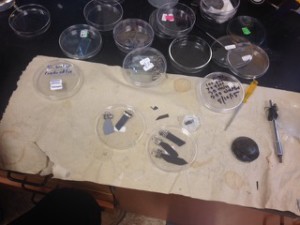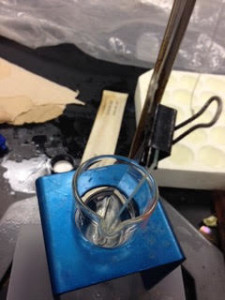My internship is at the Chemical and Materials engineering department at University of Kentucky. I work with Dr. Barbara Knutson, Dr. Stephen Rankin, and two grad students.
I arrived in Kentucky after a long drive on Sunday night. I drove to the university for the first time Monday morning and figured out parking and the logistics of everything. I was pleased to find out that the engineering buildings, Ralph G. Anderson Building (RGAN), ASTECC, and Anderson Tower were all a very short walk away from where I parked. The first thing I did was meet Dr. Rankin and Syed, a PhD student in Anderson Tower. They briefed me on the basics of what I would be doing. Syed then walked me to the lab so I could complete the online Chemical Hygiene and Hazardous Materials Disposal training. After I completed the training Syed showed me around the lab.
My host family lives in Lawrenceburg, Ky., which is about a 25 to 45 minute drive depending on traffic. Steve, the father of my host family, works a manager at Toyota America. Shelly, the mother, owns a marketing business.
I spent the rest of the week either working in the lab or reading research theses to further understand the processes we are using. The point of our research is to develop thin titania or Titanium Dioxide for Hydrolysis or for flux purposes. Flux is when you diffuse a solution through a membrane to to separate it.
The first thing Syed and I did was prepare the solution required to make titania. We start with ethanol as a carrier and then add F-127 which is an organic polymer used to make the pores in the titania film. Once that has dissolved into the ethanol it is placed into a glove box that is purged with nitrogen. The glove box needs to be purged with nitrogen because we do not want the titaniumtetrachloride to react with normal atmospheric conditions. After the TiCL4 has been added, water is then added to actually create the reaction required to create titanium dioxide. We then take the substrate and dip coat it. The substrate is then refrigerated and baked.
For the rest of the week we have been preparing various dip coats for various substrates including a porous aluminum oxide, which requires a special preparation involving an organic polymer modification before the titania treatment.
Silicon substrates



Glad to see all is well and you are learning so much. Enjoy!